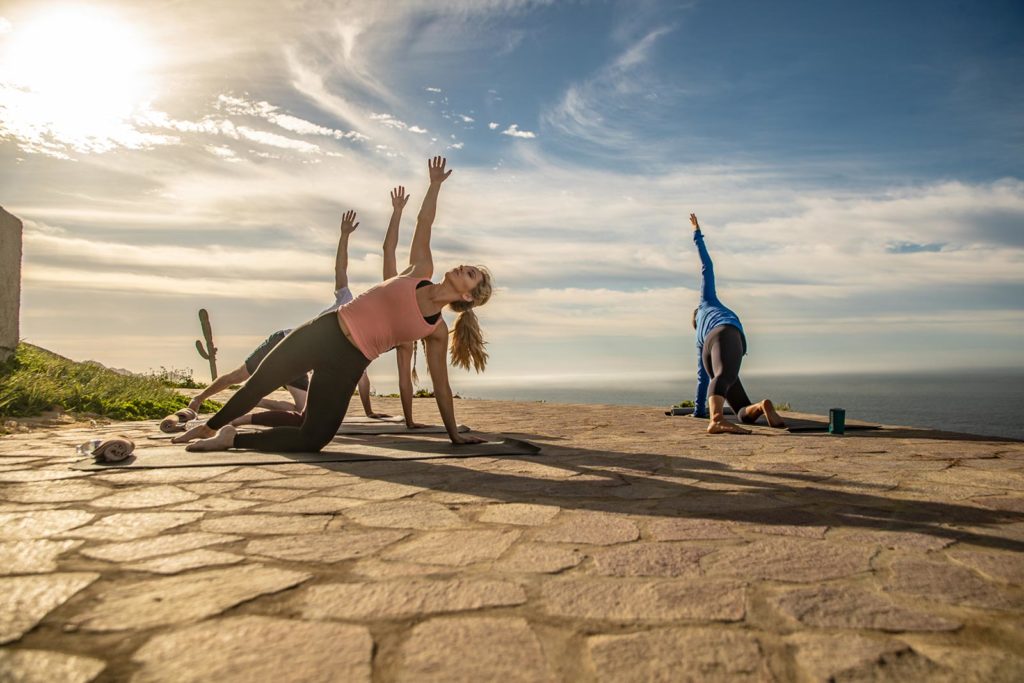Redefining the Wellness Arena
Along with everything else, 2021 was the year of wellness. We’ve never been so well educated about vaccines, hospital, and health-care workers. Olympians and other athletes were incredibly open about their mental health issues. The in-home fitness market boomed, from Peloton bikes to exercise apps.
According to “The Global Wellness Economy: Looking Beyond Covid,” a recent study, the wellness industry was a $4.3 trillion business in 2017, growing to historic levels in the two years before the pandemic. By 2025, the Global Wellness Institute (GWI) projects the wellness economy will expand to $7 trillion.
All that growth during the age of Covid also has expanded our definitions of health and well-being.
According to Katherine Johnston, GWI senior research fellow, “The pandemic has brought new shifts and a global-values reset. Wellness now means far more than a facial or spin class, with a growing focus on mental well-being and the importance of work-life balance, social justice, environmental sustainability, the built environment, and public health.”
But that’s just one side of the coin. One area where wellness was booming pre-pandemic was travel, with “health tourism” already meaning much more than getting a massage or taking a yoga class at a luxury resort. Travelers were looking for new ways, and places, to help them alleviate physical and mental stress.
There is little doubt healthful travel will return and continue to grow. As soon as the pandemic allows, we’re all going to seek comfort in nature, sustainability, and mental wellness.
HUNTER is excited to see where this passion and pent-up demand takes us next. Many of our clients, from resorts to golf communities, are long-time mainstays in the healthy-travel marketplace. From The Sea Pines Resort on Hilton Head Island to Pueblo Bonito Resorts in Los Cabos and Mazatlán, Desert Mountain Club to Reynolds Lake Oconee promote attributes important for wellness to their guests and/or members.
These might include hikes, outdoor classes, or special experiences not readily found elsewhere, such as Pueblo Bonito’s tepee beach dinner or a kayak tour of Hilton Head’s Calibogue Sound. Reynolds’ Richland Pointe is the first private club to offer Biocircuit, the fitness training solution from Italian-based Technogym. The wellness center at Richland Pointe is just the fifth location in the U.S. for the Artificial Intelligence-driven workout system that offers personalized programs that help users achieve their goals in a short amount of time. The 12 stations are app-based, adjusting in advance to each person’s needs while tracking their progress.
Borrowing a page from some home-centric, Covid-era activities, cooking classes and farm-to-table meals are seeing a surge. Not only are resorts adding more hands-on, experiential activities, so are real estate communities. The kitchen garden at Carmel’s Santa Lucia Preserve, a 20,000-acre real estate and nature preserve, and cactus maze at Quivira Los Cabos are extremely popular, new additions.
The spa sector will also rebound—at a projected rate of 17% per year through 2025. The spa environment and its rich array of treatments contribute to an overall sense of well-being, so it’s no wonder several HUNTER real estate community clients have on-site, full-service spas for their residents and members, including the Spa at Richland Pointe (Reynolds Lake Oconee, Georgia) and the Sonoran Spa & Fitness Center at Desert Mountain (Scottsdale). Nearly all of our client communities offer the highly sought-after combination of recreation and social pursuits with open spaces and privacy. So, again, it’s little wonder these communities have grown, often dramatically, over the last few years, and have responded by adding more amenities.
With COVID-19 dramatically accelerating the understanding of the role that the built environment and homes play in physical and mental health, the wellness real estate market was the #1 growth-leader both before and during the pandemic, with 22% annual growth. Wellness residential projects (either built or in the pipeline) skyrocketed from 740 in 2018 to over 2,300 today. Wellness real estate will continue its growth surge and is projected to double by 2025. This sector encompasses everything from building materials to air filtration systems, lighting to water features, and yes, even Feng Shui.
We’re excited and energized to be part of this wellness explosion and look forward to sharing more information and innovations.
